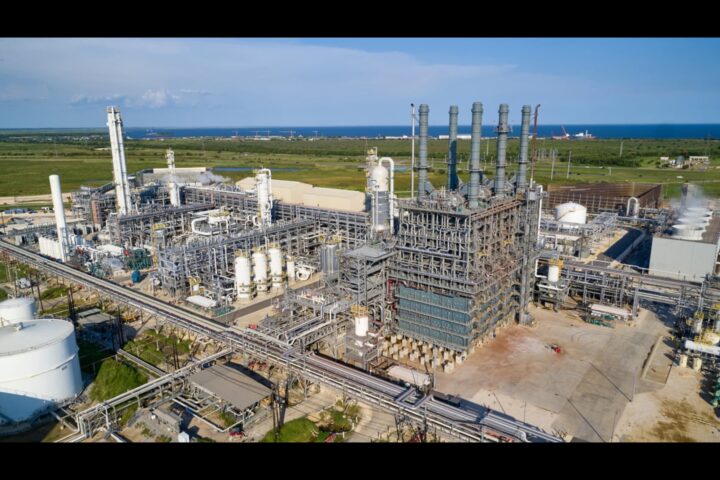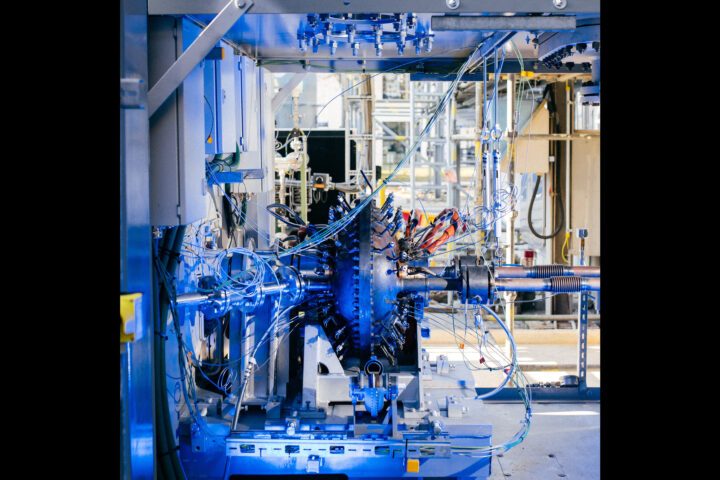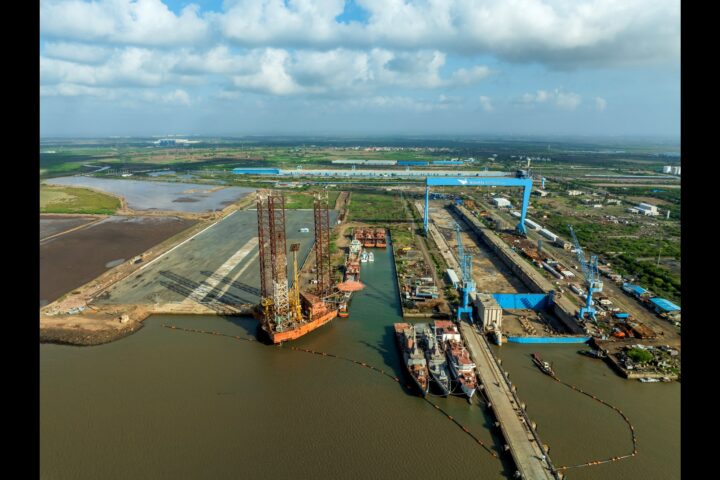How do you evaluate the growth and maturity of India’s green building market over the last decade?
India’s green building footprint is growing gradually. What began as a niche concept is now becoming a mainstream imperative. Over the past decade, the sector has expanded well beyond commercial offices to include affordable housing, schools, hospitals, retail, and industrial spaces. This growth reflects a fundamental shift in perception, where sustainability features like energy efficiency, water conservation, and improved indoor air quality are now seen as essential. Developers and homebuyers alike are increasingly aware of the economic and health benefits of green design. Many projects now target Net Zero performance in energy, water, waste, and carbon, driven by ESG commitments and sustainability disclosures. Smart technologies such as automation, smart meters, and performance tracking tools are becoming standard. Government incentives, including additional FAR, tax rebates, and integration with programs like Smart Cities and ECBC, have further accelerated adoption.
Sustainable materials and products have also played a vital role. The use of locally sourced, low-impact materials such as fly ash bricks, recycled steel, bamboo, and natural stone helps reduce embodied carbon while supporting local economies. At GRIHA, we promote climate-responsive strategies by encouraging passive design, efficient resource use, and eco-friendly materials. For instance, the Rajiv Gandhi National Aviation University achieved a 68% reduction in energy use through passive design and local materials like Kota stone, while the Mahalaxmi Jagdamba Temple complex nearly eliminated water and waste impact through sustainable site planning. Eventually, it is incumbent upon the end user to demand green buildings to bring the shift in the market and expedite climate action. This will be the real game-changer. It requires collective action from all stakeholders, including government, industry, academia, and civil society, to build awareness and drive adoption. Such demand-driven change will advance the sustainable transformation of the industry, thereby contributing to building a nation’s green economy.
With several green building rating systems available in India. How should developers and builders determine which one is best suited to their project?
With the growing focus on sustainability in the built environment, numerous green building rating systems have emerged globally. It naturally leads developers and project teams to wonder, “Which one is best suited for our project?” The answer is not one-size- fits-all; it ultimately depends on the specific goals, scale, and context of the project in question.
Green building rating frameworks are designed to serve varied objectives, whether it’s enhancing energy efficiency, improving occupant comfort, conserving water, or reducing embodied carbon. The key lies in identifying a rating system that aligns closely with your project’s sustainability vision and operational needs. While various green building ratings and certifications coexist, there are two key aspects of ratings and certifications: ease of implementation for short-term benefits, and the credibility and transparency of the certification for long-term value and impact.
The GRIHA rating framework recognizes the diverse nature of building typologies and the evolving expectations of stakeholders. Over the years, we have developed a comprehensive suite of rating variants in the context of Indian climatic conditions and construction practices. This flexible and context-sensitive approach allows project teams to select a rating that fits their scale, purpose, and budget without compromising on performance.
These include GRIHA for new constructions, SVAGRIHA for small and medium-scale projects, GRIHA for Affordable Housing (GRIHA AH), GRIHA for Existing Buildings (GRIHA EB), GRIHA for Existing Schools (GRIHA ES), GRIHA for Interior Spaces (GRIHA for InS), GRIHA for Large Developments (GRIHA LD), GRIHA for CITIES, GRIHA Infrastructure ratings such as for highways and ports etc. We always advocate for early engagement, bringing sustainability experts on board during the design stage ensures a seamless integration of green principles. While there’s no universal “best” rating, there is always a best-fit solution, one that maximizes building performance, optimizes resource use, and enhances user well-being.
There’s a perception that green certification adds to project cost. How do you address this concern, especially among smaller developers in Tier 2 and Tier 3 cities?
The perception that green certification raises project costs is common, especially among smaller developers in Tier 2 and Tier 3 cities, where margins are tighter and awareness is still growing. However, it’s vital to view green certification not as an additional expense but as a long-term investment that delivers significant returns. Firstly, it is important to break the myth that green buildings cost more. There is a need to demystify this thought by raising awareness and changing the mindsets of the end- users to make the right choices at the right time. I always stress that ‘Sustainable is Affordable’. Green building practices, such as optimizing natural lighting, ventilation, and energy-efficient appliances, do not necessarily involve high upfront costs.
A building that is designed considering the context with passive design measures is not expensive. But if the design and materials decision steps are skipped and plug-ins of efficient materials are added subsequently, then these materials come at an additional cost. If one decides to go for a green building, most of the green building features must be incorporated at the design stage, which guides the resource consumption of the building. This will help in managing the expenses efficiently. Even if the initial costs are marginally high, the paybacks are over a very small period of about 2-3 years, considering that the life of a building is about 50-60 years. Subsequently, there are continuous tangible and intangible benefits of green building, including better comforts, reduced operating costs, lower utility bills for occupants and the satisfaction of being responsible towards one’s environment, thereby increasing the asset’s value.
Over the years, these green-certified buildings can also lead to better rental yields and resale values, enhancing the developer’s ROI. To address the cost concern, various state governments and ULBs provide incentives such as faster approvals, tax rebates, and subsidies are available for green-certified buildings. These benefits can help offset certification expenses, especially when developers collaborate with the right consultants early in the design process to avoid costly revisions later. With Life Cycle Costing (LCC) and Life Cycle Assessment (LCA) in the GRIHA variant, it promotes informed decision- making in building design and material selection. This aids in evaluating the long-term economic and environmental impacts of building components, supporting resource efficiency, reducing operational costs, and making sustainable choices throughout a building’s life cycle. Additionally, green building certification bodies such as GRIHA offer rating systems such as SVAGRIHA (Simple Versatile Affordable GRIHA) and JANGRIHA (Jan Awas Nirman GRIHA), tailored to smaller projects and local contexts, making compliance more accessible and affordable.
In the end, it is all about education, awareness and outreach that play a vital role in promoting informed decision making. Through capacity-building workshops, local partnerships, and case studies from similar regions can help smaller developers understand the tangible benefits.
Could you share details of your organisation’s key collaborations and outreach initiatives aimed at promoting and creating awareness about green buildings?
GRIHA Council, through its collaborations and outreach initiatives, is proactively working towards promoting green building and construction practices, with a strong emphasis on inclusivity, regional adaptability, and capacity building. We have collaborated with a diverse range of stakeholders, including academic institutions, industry bodies, and government entities, to enable alliances for achieving more inclusive and sustainable outcomes. Our partnerships with academic institutions facilitate in development of novel, innovative and cutting-edge research and solutions. Collaborating with industry bodies helps us understand the viability and applicability of the research while offering practical, scalable solutions depending on the market demand. The government partners provide crucial policy support and regulatory frameworks. Together, each one of us contributes to creating a robust ecosystem that facilitates the implementation of climate solutions. Furthermore, training and capacity building of industry professionals and the workforce are another essential component while we are striving towards net zero by 2070. By offering customized capacity-building and training programs, we equip individuals with the required skills and knowledge to drive sustainable practices within their organizations and beyond. Furthermore, it enhances the sector’s capacity to transition to sustainability, promotes a long-term systemic shift, ensures far-reaching impacts, thereby contributing to the greater vision of building a climate-resilient future. Through our flagship annual GRIHA Summit and focused regional outreach, we foster knowledge exchange and stakeholder engagement to deliberate on potential and actionable strategies for accelerating India’s progress towards a net-zero built environment.
What are the challenges to widespread green building adoption in India, and how is your organisation helping to overcome them?
We are standing at a pivotal moment where India envisions becoming a developed nation by 2047. In this journey, the pace of development will be rapid and critical. However, at this speed, sustainability often takes a backseat, resulting into infrastructure being locked as resource-intensive systems for the next 50-60 years. Therefore, it is essential to integrate green and sustainable practices into the development process right from the outset, ensuring inclusive and environmentally responsible development. With concerted efforts and collaborations, we can progress towards green nation development. The most prominent concern is a lack of awareness. Many developers and other stakeholders still presume green building as an added cost or a complex process rather than a value addition. This perception slows down adoption. Another challenge is the fragmented market and varied regulatory environments wherein the builders often struggle to navigate different rating systems and guidelines. From our experience at GRIHA, we are trying to address these challenges by emphasizing on education and capacity building. For example, we regularly conduct workshops and training sessions for architects, engineers, planners, consultants, students, industry professionals and developers to demystify sustainability concepts and highlight cost- saving opportunities through energy efficiency and resource management. Additionally, we focus on early integration of green principles in the design phase, which greatly reduces implementation challenges and cost overruns. Furthermore, several state governments now offer incentives like additional Floor Area Ratio (FAR) or expedited approvals for Green-certified projects, which motivates developers to adopt green practices. Collaborating with government, academia and industry bodies through Memorandum of Understanding (MoUs) helps in establishing long-term commitments to sustainable development. Associating with the future workforce of our nation, we also host competitions and events like GRIHA NASA (National Association of Students of Architecture) for college students, Paryavaran Rakshak programme for school children, etc., embedding sustainability in our future generations. In summary, while challenges remain, GRIHA’s approach of education, tailored tools, early engagement, and policy advocacy and collaboration can facilitate in acceleration of the green building movement in India.
The green building movement cannot be truly comprehensive without addressing existing structures. What measures can be taken to retrofit and certify older buildings as green?
While the bulk of infrastructure is yet to be built, existing buildings account for high resource consumption and inefficiencies. Every building, once built, becomes an existing building. Moreover, with operational and maintenance costs forming a large part of expenses in older structures, improving their performance presents a financially demanding proposition. Unlike new construction, however, retrofitting existing buildings is more complex. The opportunity window to amend is limited. GRIHA Council developed the GRIHA for Existing Buildings (GRIHA EB) rating variant, a tailored framework that provides integrated solutions to enhance performance while ensuring occupant comfort. It assesses buildings across critical parameters such as energy and water use, waste management, indoor air quality, thermal and visual comfort, and operational practices. It promotes practical retrofits like energy-efficient lighting, renewable energy use, low-flow fixtures, and rainwater harvesting to improve resource efficiency. It emphasizes proper waste management, metering, indoor comfort, and air quality, while also promoting accessibility and environmental awareness. These measures not only reduce environmental impact but also lead to lower operational costs, enhanced property value, and increased tenant retention, particularly in commercial spaces. All GRIHA rating variants embody the principle that “what gets measured gets managed” offering a structured, cost-effective approach to greening India’s built environment. As the global push for energy efficiency in existing buildings intensifies, India’s commitment to transforming its older structures through tools like GRIHA EB will be central to achieving climate resilience and sustainable development.
While India’s green building movement has made significant strides, substantial gaps still remain. How can government policy and regulatory frameworks further catalyse its widespread adoption?
While India’s green building movement has made significant strides, particularly in commercial real estate and metro cities, its adoption remains limited across affordable housing, rural areas, and existing building stock. To bridge this gap, government policies, schemes, and regulatory frameworks play an instrumental role. Several national missions already provide a strong foundation. The Smart Cities Mission, Pradhan Mantri Awas Yojana (PMAY), Urban and Gramin presents unique opportunities to promote sustainability in urban planning and embed green design and sustainable construction and building practices in mass affordable housing, respectively. Frameworks like the Energy Conservation Sustainable Building Code (ECSBC) and Eco-Niwas Samhita (EnS) provide essential regulatory guidance for energy efficiency in commercial and residential buildings. However, these must be uniformly adopted across states and integrated into municipal building approval processes to have a real on- ground impact. Providing incentives based on building taxonomy enables a more strategic approach to promoting green buildings. To incentivise green construction, many state and city authorities already offer benefits for GRIHA-rated projects, including additional Floor Area Ratio (FAR), property tax rebates, fast-track approvals, and adoption by public agencies such as CPWD and NBCC have mandated GRIHA in many of their developments, with financing support available for select projects. To scale impact, these incentives must be extended to retrofitting existing buildings and affordable housing, not just premium developments. Offering rebates on green building products and materials with Environmental Product Declarations (EPDs) encourages the use of low-impact, resource-efficient options. It will not only promote transparency and environmental responsibility in manufacturing but also make sustainable choices more accessible and financially viable for developers, accelerating market transformation toward greener construction practices. Further integration of green buildings with government-led programs such as the Rooftop Solar Scheme and State Energy Efficiency initiatives can ensure alignment with clean energy, green mobility, and operational efficiency goals. Towards 2070, capacity building under Skill India, NULM, and other training missions should be directed towards building a workforce of architects, engineers, masons, and local authorities to strengthen on-ground implementation of green construction practices and rating systems. Finally, embedding climate resilience, ESG reporting, and environmental performance monitoring into urban policy and development and finance frameworks will help India’s built environment align with its climate goals and SDG commitments, creating a future- ready, sustainable infrastructure ecosystem.
Are Indian builders showing interest in health and wellness or zero-waste buildings?
With growing recognition of the impact of the building on the environment, human health and productivity, demand for strategies that promote healthier indoor spaces and zero- waste operations. In India, rapid urbanization and increasing building density have made occupant well-being and waste management critical concerns, requiring innovative and context-sensitive solutions. From our experience at GRIHA, we’ve seen a marked shift in awareness, particularly among developers in the commercial, hospitality, and institutional sectors. There is growing interest in factors like indoor air quality, mental health, daylight access, and thermal comfort. The pandemic significantly accelerated this trend, with more clients now asking, not just “Is my building energy-efficient?” but also “Is it healthy for the people using it?” a meaningful and necessary shift in perspective. Global studies have shown that healthy buildings boost productivity, reduce absenteeism, and enhance cognitive performance. For example, The Impact of Working in a Green Certified Building on Cognitive Function and Health reported that occupants in green- certified buildings scored 26.4% higher in cognitive tests and experienced 30% fewer sick-building symptoms. GRIHA incorporates such concerns through criteria focused on occupant comfort and well-being. Simultaneously, zero-waste operations are gaining traction, especially across large campuses and industrial hubs aiming for circular, sustainable operations. Frameworks that support Net Zero Waste goals offer clear, actionable strategies.With respect to this, I would highlight the Decarbonisation Habitat Programme (DHP) launched by GRIHA Council. It is a comprehensive performance assessment and benchmarking framework designed to guide existing and new developments, ranging from campuses and townships to large infrastructure projects, towards achieving Net Zero Waste, Water and Energy Positivity. Uniquely, it also expands its scope to include low-carbon mobility, social equity, and sustainable lifestyle practices, making it a holistic decarbonisation framework. As sustainability goals evolve, we remain committed to equipping the built environment with tools that are climate-responsive along with people-centric, scalable, and impact- driven.
As India moves toward its 2070 net-zero commitment, how is your organisation preparing to meet future sustainability benchmarks in the built environment?
As India approaches its 2070 net-zero commitment, GRIHA Council, as a catalyst for sustainable transformation in the construction and building sector, is proactively working towards the development of a climate-resilient and resource-efficient built environment. Our strategic focus lies in integrating national building codes and regulations within the GRIHA rating framework, thereby facilitating a systemic transition towards sustainability across public and private sector projects nationwide. Aligning with evolving market dynamics and national climate goals, GRIHA’s rating variants and its performance metrics around net-zero energy, water, and waste are regularly amended. This ensures that the infrastructure built today is both environmentally responsible and climate resilient.
By providing comprehensive technical support and early-stage integration of passive design strategies, renewable energy technologies, and low-emission materials, GRIHA Council is proactively advancing the adoption of sustainable, high-performance and resource-efficient buildings. Recognising the need for credible, market-ready solutions, GRIHA Council’s Product Catalogue offers a curated platform for sustainable building materials and technologies, each meticulously evaluated to support informed and transparent decision-making. Along with this, capacity building remains central to our mission. Preparing the workforce towards 2070, we conduct stakeholder-specific training and awareness programmes, equipping architects, engineers, developers, government officials and other industry professionals with the skills required to contribute and take forward India’s transition to a low-carbon economy. Furthermore, through our regional conclaves and focused outreach, we are creating platforms for dialogue, knowledge sharing, and collaboration, ensuring the benefits of sustainable development are inclusive and widespread. GRIHA Council remains committed to enabling and facilitating scalable, sustainable solutions for low-carbon development pathways, contributing to India’s net-zero trajectory.




















